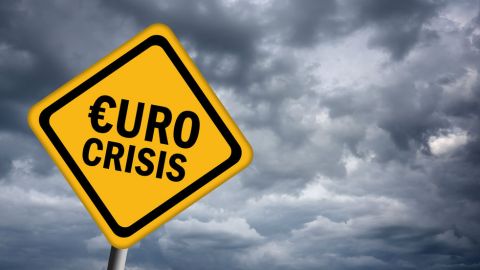European Union: The Trade Perspective

Europe’s economic troubles are reaching a pivotal point. In Spain, where austerity measures has caused a 0.3% economic contraction from Q4 of 2011, unemployment has risen to a record 25% and just over 50% among youth. The Italian economy, already forecast to grow negatively this year, contracted 0.8% in 2012, weaker than expected. Analysts project Greece needs $175 billion in additional financing over the next two years. Austerity measures continue to dampen investment, consumption, and trade. An end to the country’s growth and debt hardships seems ever more complex. Add to these problems political uncertainties across the Union, and the threat of a Greek exit from the Euro is now being discussed more seriously. Is this the time to talk about trade and its role in sustaining the EU? Yes it is.
Given weak forecasted growth and ongoing fiscal deterioration in Europe, policymakers must find new ways to promote economic growth on the continent, and find renewed justification for placing scarce resources into existing growth strategies. Trade facilitation – policies that reduce on-the-border transaction costs other than tariff cuts – can provide significant economic benefits for EU countries and can act as an engine of cohesion and strength.
Trade is the mainstay of the European economic model and is one of its most attractive attributes. EU membership makes it possible to move goods relatively freely between member states without need to complete formal import and export documentation or pay import VAT. Despite the relatively weak performance of Western Europe and the world economy in recent years, trade remains strong. In 2009, Europe’s merchandise trade was worth about $4.5 trillion, more than East Asia’s and North America’s combined. A recent World Bank report highlights the major strengths and weaknesses of Europe’s economy, and suggests that innovation, productivity, and trade in value-added services will be crucial to securing efficiency and economic growth for Europe’s future.
In a recent journal article, I and other colleagues produced empirical evidence that demonstrates the strong net positive effect of trade facilitation on economic growth for European countries. Drawing on data from a variety of sources including World Economic Forum Global Competitiveness Report and the World Competitiveness Survey, we constructed a database centered on four trade facilitation dimensions – port efficiency, customs regimes, regulatory policy, and information technology. We then used a computable general equilibrium (CGE) approach to simulate the impact of the hypothetical improvements of these indicators on economic growth.
We found that for EU members that joined the Union in 2004[1] and well as candidate members Croatia, Macedonia FYR, and Turkey, raising capacity in port and information technology infrastructures half-way to the EU 15 [2] average, would result in trade gains of $49 billion and $62 billion respectively. We also found that trade facilitation reforms had large impacts on partner trading countries. For example, if Poland increased its IT infrastructure to half-way the EU15 average, the EU15 would enjoy a trade gain of 0.29 percent. Overall, our results suggest that trade gains are positively correlated with the development of behind-the-border trade facilitation capacity.
With trade being a stalwart of the European Union system, and with this empirical evidence suggesting that trade facilitation reform can results in substantial trade gains for EU countries, efforts to raise capacity in trade facilitation should be considered as part of the policy steps moving forward.
The debate on whether Greece should leave the Euro – a multi-faceted and complex scenario – will no doubt dominate headlines for some time to come. While the drachma would certainly make Greek exports cheaper, exiting the Euro will add additional trade transactions costs, particularly given the drachma may be undervalued and highly volatile. An important element of Greek’s competitiveness strategy should be further trade and business reforms. Investments in more efficient ports, clearer business and investment regulation and further customs harmonization are policies that boast tangible economic benefits in the form of increased trade and additional investor confidence.
While the road to recovery for Europe will be long with challenging political economy questions, we can agree that a sustainable solution will involve a mix of policy measures and structural steps toward reform. Let’s not forget trade as a dynamic engine of cohesion and strength in Europe and elsewhere. It may just add the type of concrete economic gains the idea of a European Union promised.
[1] Ten countries joined the EU on May 1, 2004: Cyprus, Czech Republic, Estonia, Hungary, Latvia, Lithuania, Malta, Poland, Slovak Republic, Slovenia
[2] The 15 members that existed prior to May 2004
Photo courtesy of Arcady/Shutterstock.com





